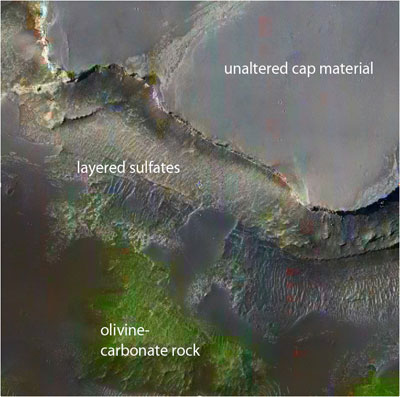Aqueous Environments During Mars' First Billion Years
By:
Bethany Ehlmann
California Institute of Technology
| When: | Friday, September 20, 2013, 10:30 a.m. to 11:30 a.m. Join us for coffee beginning at 10:00 a.m. |
| Where: | Seminar Conference Room, 10100 Burnet Road, Bldg 196-ROC, Austin, Texas 78758 |
| Host: | Joe Levy, UTIG |
Click for a Live Broadcast.

Abstract
The last decade of high resolution orbital imaging spectroscopy of Mars has revealed nearly a dozen distinct aqueous, potentially habitable environments, ranging from lacustrine to hydrothermal to weathering. These environments varied in space and time and do not necessarily imply a continually warm early Mars, but rather a warm and wet subsurface with punctuated periods of more clement conditions that allowed liquid water availability at the surface. One of these environments, the sedimentary facies in the Gale Crater basin, is the landing site for the Curiosity rover, and first results from this mission will also be discussed.
Image at right: Geologic units beneath the Syrtis Major lavas record a sharp mineralogic transition between environment of carbonate formation to one of iron-sulfate formation (CRISM infrared color, R: 2380nm, G: 1800nm, B: 1150nm) overlain on a HiRISE 25cm/pixel image).




